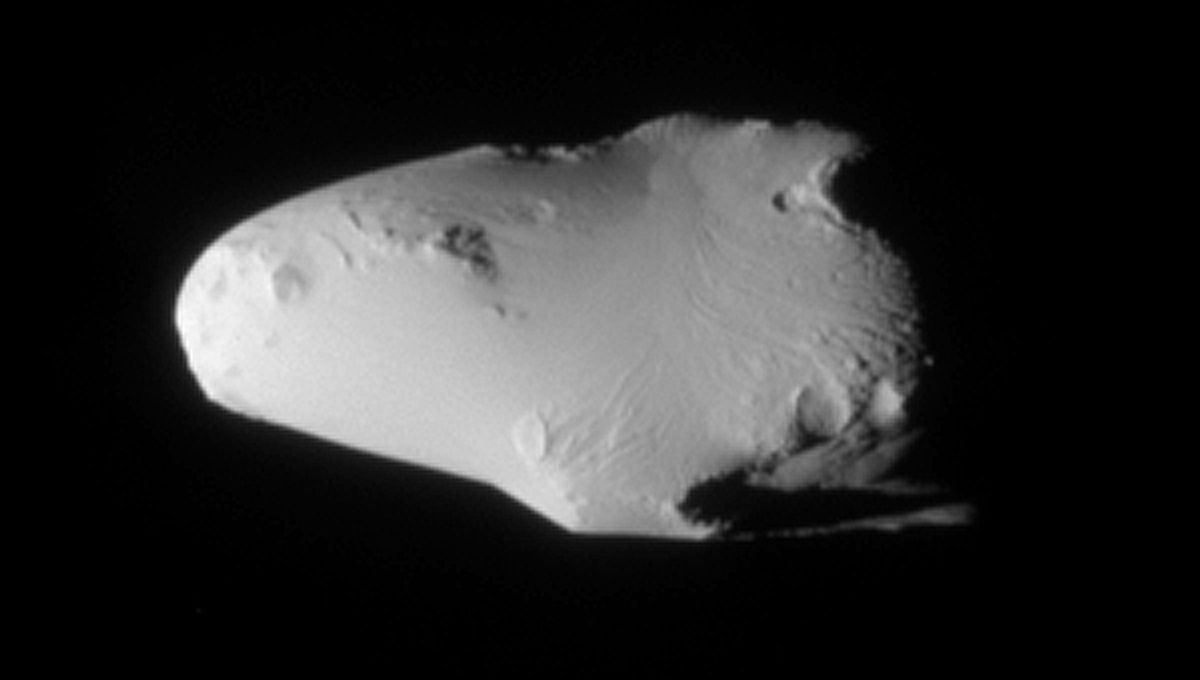
An asteroid discovered in 2019’s orbit has been mapped, revealing it as a Trojan of Saturn, meaning an object with the same orbit, but traveling ahead or behind.
The spacecraft Lucy has been sent to study the Trojan asteroids of Jupiter – bodies that follow the same orbit, but in the Lagrangian points 60 degrees ahead or behind the giant planet. It’s going there because we expect these asteroids to reveal some interesting things about the development of the Solar System, but also because there are so many of them to explore. We also know of Trojans for the other giant planets, as well as Earth and Mars. Yet until now, Saturn was missing out.
Believers in ancient myths might conclude Saturn had eaten the Trojan asteroids, as the Roman god did his children. Scientists, however, were confident Saturn must have Trojans, and kept up the hunt until rewarded with the discovery of 2019 UO14, which a preprint, yet to be peer-reviewed, reports to be in a Trojan orbit.
2019 UO14’s Trojan status is only temporary, however. That’s not particularly unusual. Many Trojans are transient. A planet’s gravity slowly modifies nearby objects’ orbits until they find themselves circling either Lagrange point 4 (L4), 60 degrees ahead of the planet, or L5, 60 degrees behind. In a one-planet star system, that might be the end of things, but the constant slight gravitational attraction from other planets is disruptive, so that many Trojans eventually wander far enough away from the Lagrange point, and shift into a non-Trojan orbit.
The authors conclude “2019 UO14 was likely captured as a Centaur and became trapped around L4 approximately 2,000 years ago.” In astronomical terms, Centaurs are objects that orbit between Jupiter and Neptune and cross the orbit of at least one planet. They expect this one has another thousand or so years of Trojan status ahead of it.
This does raise the question: If a Centaur becomes a Trojan, does that make it half a Trojan horse?
Color-wise, 2019 UO14 resembles the Trojans of Jupiter and Neptune, so what we learn from Lucy’s visit to several could be informative. However, the authors raise a possibility that would make it much more interesting.
If 2019 UO14 has a similar composition to many other Centaurs, sharing Saturn’s orbit would make it warm enough that some of its ice would be turning to gas and escaping, taking dust with it. In other words, it would be a comet, or “active” as astronomers put it. The observations made show no sign of activity, but the authors think the chances are high enough to justify further work. If they’re right, this would be the first active Trojan ever observed.
It’s too cold at Uranus or Neptune’s distance from the Sun for ice to melt. At Jupiter, some gases would have escaped long ago, while other ices, like water ice, would be stable. If 2019 UO14 is not active, the authors propose it may have once orbited closer to the Sun, and lost all its more volatile ices then.
As its name suggests, 2019 UO14 was discovered five years ago, but in April this year the University of Hawai’i telescope was used to take six images of its motion to improve our knowledge of its orbit. Combined with archival data from before it was recognized, this was enough to map the orbit with confidence.
The shortage of previous Trojans for Saturn is somewhat odd. There are more than 13,000 known Trojans of Jupiter. It’s no surprise Saturn has fewer – after all its gravity is smaller, it can’t raid a nearby asteroid belt as easily, and any that do exist would be more distant from us and therefore harder to spot.
On the other hand, when Uranus has at least one known Trojans and Neptune has 31, Saturn’s shortage looks considerably stranger. Puny Mars has 14, while the status of one for Venus (not Zoozve, which as a quasi-moon is something different, but 2013 ND15) is disputed. It’s considerably harder for us to spot a Trojan for Earth, since by definition we never pass it in our orbit, but we’ve still found two. Astonishingly, even dwarf planet Ceres and not-even-a-dwarf Vesta have temporary Trojans. It really is time Saturn caught up.
Saturn’s shortage in this regard has been attributed to having lost any primordial Trojans during the period when the giant planets’ orbits migrated. However, it has since had billions of years to capture new ones. As usual, Jupiter’s gravitational influence makes things harder, but if that hasn’t stopped Mars, it certainly shouldn’t prevent Saturn from acquiring a few, maybe even some it gets to keep.
The paper is undergoing peer review, preprint available on arXiv.
[H/T: Phys.org]
Source Link: Saturn Finally Has A Trojan Asteroid, But Not For Long